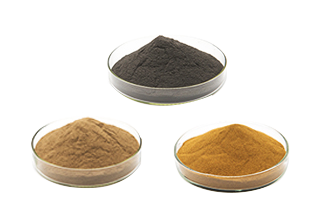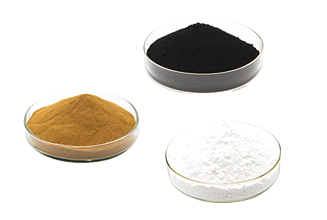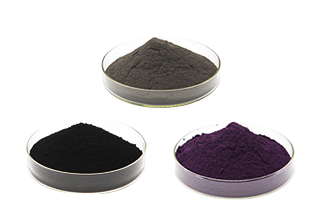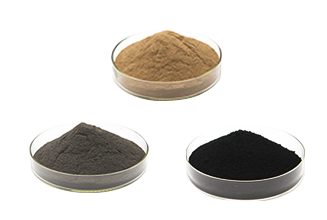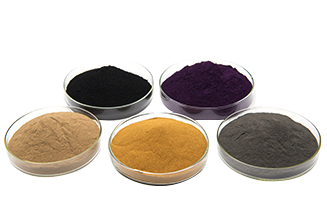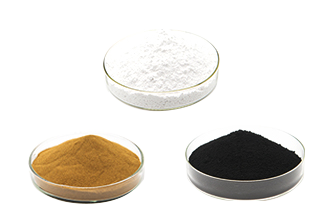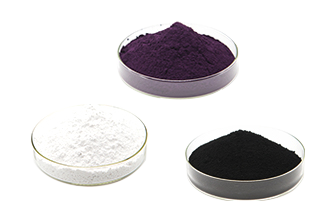Properties and applications of common carbides
The so-called carbide refers to a binary compound formed by carbon and an element with a smaller electronegativity or a similar element (except hydrogen), and the carbide has a relatively high melting point. obtained by reaction at high temperature. Carbide has high temperature resistance, wear resistance, corrosion resistance and good electrical conductivity. It is widely used in the production of ceramics, cutting tools, wear-resistant materials and other fields. In recent years, carbide has also shown good performance in the field of catalysis. Carbide materials are widely used in industrial production of alloys due to their unique strength and stability, and their performance determines their application. Let's take a look at the properties of common carbides!
Zirconium Carbide (ZrC)
Zirconium carbide is an important high-temperature structural material with high strength, corrosion resistance and chemical stability, with a relative density of 6.73. Insoluble in cold water, hydrochloric acid, soluble in oxidizing acid, aqua regia and hydrofluoric acid, easily soluble in molten caustic. Although it is red hot and does not decompose when it encounters water, it burns in oxygen when it is red hot. The fine powder is easy to cause sparks, and it is also easy to react with chlorine, bromine, iodine and nitrogen to form halides or nitrides. Zirconium carbide is a hard, high melting point material and an excellent high temperature refractory material. It is a raw material for solid propellants in rocket engines. It can be used to produce alloy steel, as a raw material for the production of metal zirconium and zirconium tetrachloride, and it is a very promising fine ceramic material. It can be used as incandescent filament, and now it is mainly used as abrasive, and can also be used as raw material for cemented carbide.
Tantalum Carbide (TaC)
Tantalum carbide, a transition metal carbide; black or dark brown metallic powder, cubic crystal system, hard, insoluble in water, slightly soluble in sulfuric acid and hydrofluoric acid, soluble in mixed solutions of hydrofluoric acid and nitric acid; chemical Extremely stable in nature; excellent physical and chemical properties, such as high hardness, high melting point, good electrical conductivity and thermal shock resistance, good chemical corrosion resistance, high oxidation resistance and certain catalytic performance, etc.; Application: (1) In cemented carbide, it is widely used as an additive, and its main function is to improve the high temperature strength of cemented carbide and inhibit the growth of tungsten carbide particles. (2) In cutting tools, as a hard coating to increase the chemical corrosion resistance and wear resistance of the base metal. (3) In the military, it can be used as a coating for jet engine turbine blades and rocket nozzles, which can significantly improve its ablation resistance and prolong its service life. (4) due to its good electrical conductivity. Therefore, it can be used for electrode materials, but also can be cut into complex shapes using wire EDM. (5) As a second-phase particle reinforced metal matrix composite material, it has been widely used in aerospace, metallurgy, building materials, electric power, hydropower, mining and other fields.
Vanadium Carbide (VC)
Vanadium carbide is a commonly used material in the metallurgical and chemical industries. The main components are C and V, and a small amount of Mo, Ni, Fe and other impurities exist. Because vanadium carbide has some special properties, it is widely used in metallurgy, electronics, catalysts and other fields. For example, vanadium carbide can be used in structural steel, tool steel, pipeline steel, rebar, general engineering and cast iron. Studies have shown that the addition of vanadium carbide to steel can improve the comprehensive mechanical properties of steel such as wear resistance, corrosion resistance, toughness, strength, ductility, hardness and thermal fatigue resistance, and make the steel have good weldability. It can play the role of eliminating the extension of inclusions. Vanadium carbide can be used as a grain inhibitor for ultra-fine cemented carbide. Adding a small amount of VC can significantly improve the hardness and fracture toughness of the base alloy and prevent the growth of WC grains in the cemented carbide. Adding vanadium carbide can also prolong the life of the cemented carbide. 20% increase. Vanadium carbide has also been widely used in industrial fields such as high temperature coatings and synthetic diamonds with carbon sources.
Boron carbide (B₄C)
Boron carbide is a non-metallic material with important physical and chemical properties, and is the hardest boron compound after boron nitride (B₄C). Its high melting point, low density, chemical inertness, excellent thermal and electrical properties make it a new material for high-tech applications. Boron carbide can also be added to alumina ceramics to improve the fracture toughness and relative strength of the material. Boron carbide is a high-temperature P-type semiconductor material with outstanding properties such as strong hardness, low density, and high chemical inertness. At a high temperature of 1000 ° C, it can react with metals such as Fe, Ni, Ti, and Zr. In addition, due to the strong ability of atoms to absorb neutrons, boron carbide has good applications in atomic physics and medicine. In addition, boron carbide has a wide range of applications in microelectronics, nuclear physics, military and space technology because of these properties.
Zirconium Carbide (ZrC)
Zirconium carbide is an important high-temperature structural material with high strength, corrosion resistance and chemical stability, with a relative density of 6.73. Insoluble in cold water, hydrochloric acid, soluble in oxidizing acid, aqua regia and hydrofluoric acid, easily soluble in molten caustic. Although it is red hot and does not decompose when it encounters water, it burns in oxygen when it is red hot. The fine powder is easy to cause sparks, and it is also easy to react with chlorine, bromine, iodine and nitrogen to form halides or nitrides. Zirconium carbide is a hard, high melting point material and an excellent high temperature refractory material. It is a raw material for solid propellants in rocket engines. It can be used to produce alloy steel, as a raw material for the production of metal zirconium and zirconium tetrachloride, and it is a very promising fine ceramic material. It can be used as incandescent filament, and now it is mainly used as abrasive, and can also be used as raw material for cemented carbide.
Tantalum Carbide (TaC)
Tantalum carbide, a transition metal carbide; black or dark brown metallic powder, cubic crystal system, hard, insoluble in water, slightly soluble in sulfuric acid and hydrofluoric acid, soluble in mixed solutions of hydrofluoric acid and nitric acid; chemical Extremely stable in nature; excellent physical and chemical properties, such as high hardness, high melting point, good electrical conductivity and thermal shock resistance, good chemical corrosion resistance, high oxidation resistance and certain catalytic performance, etc.; Application: (1) In cemented carbide, it is widely used as an additive, and its main function is to improve the high temperature strength of cemented carbide and inhibit the growth of tungsten carbide particles. (2) In cutting tools, as a hard coating to increase the chemical corrosion resistance and wear resistance of the base metal. (3) In the military, it can be used as a coating for jet engine turbine blades and rocket nozzles, which can significantly improve its ablation resistance and prolong its service life. (4) due to its good electrical conductivity. Therefore, it can be used for electrode materials, but also can be cut into complex shapes using wire EDM. (5) As a second-phase particle reinforced metal matrix composite material, it has been widely used in aerospace, metallurgy, building materials, electric power, hydropower, mining and other fields.
Vanadium Carbide (VC)
Vanadium carbide is a commonly used material in the metallurgical and chemical industries. The main components are C and V, and a small amount of Mo, Ni, Fe and other impurities exist. Because vanadium carbide has some special properties, it is widely used in metallurgy, electronics, catalysts and other fields. For example, vanadium carbide can be used in structural steel, tool steel, pipeline steel, rebar, general engineering and cast iron. Studies have shown that the addition of vanadium carbide to steel can improve the comprehensive mechanical properties of steel such as wear resistance, corrosion resistance, toughness, strength, ductility, hardness and thermal fatigue resistance, and make the steel have good weldability. It can play the role of eliminating the extension of inclusions. Vanadium carbide can be used as a grain inhibitor for ultra-fine cemented carbide. Adding a small amount of VC can significantly improve the hardness and fracture toughness of the base alloy and prevent the growth of WC grains in the cemented carbide. Adding vanadium carbide can also prolong the life of the cemented carbide. 20% increase. Vanadium carbide has also been widely used in industrial fields such as high temperature coatings and synthetic diamonds with carbon sources.
Boron carbide (B₄C)
Boron carbide is a non-metallic material with important physical and chemical properties, and is the hardest boron compound after boron nitride (B₄C). Its high melting point, low density, chemical inertness, excellent thermal and electrical properties make it a new material for high-tech applications. Boron carbide can also be added to alumina ceramics to improve the fracture toughness and relative strength of the material. Boron carbide is a high-temperature P-type semiconductor material with outstanding properties such as strong hardness, low density, and high chemical inertness. At a high temperature of 1000 ° C, it can react with metals such as Fe, Ni, Ti, and Zr. In addition, due to the strong ability of atoms to absorb neutrons, boron carbide has good applications in atomic physics and medicine. In addition, boron carbide has a wide range of applications in microelectronics, nuclear physics, military and space technology because of these properties.
related news
-
.png) May 23, 2022Carbide ultra-high temperature ceramics have high melting point, high strength, high hardness and good chemical stability, and are widely used ultra-high temperature ceramic materials
May 23, 2022Carbide ultra-high temperature ceramics have high melting point, high strength, high hardness and good chemical stability, and are widely used ultra-high temperature ceramic materials -
.png) Jun 22, 2022The promise of lithium-sulphur batteries
Jun 22, 2022The promise of lithium-sulphur batteries -
.jpg) Jan 12, 2022Silicon carbide, Boron carbide - the "king" of the bulletproof industry
Jan 12, 2022Silicon carbide, Boron carbide - the "king" of the bulletproof industry -
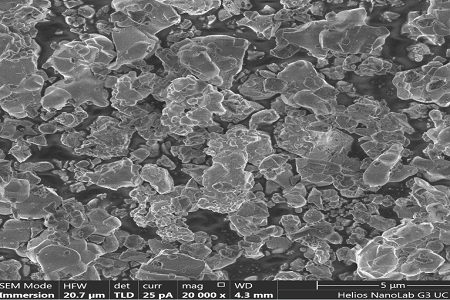 Mar 02, 2022Research on ultra-high temperature ceramic materials(2)
Mar 02, 2022Research on ultra-high temperature ceramic materials(2)

